Contributed By
Published
An illustrated article about the meaning of Panzer Dragoon Zwei's true ending. It explains in detail why Epilogue D has to be the true ending.
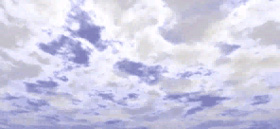
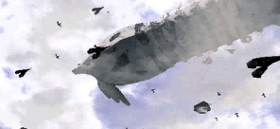
To view Panzer Dragoon Zwei’s true ending, the player must kill every enemy in every level, and take the most difficult route at each switching point. In other words, Lagi must’ve morphed into the Type 01 dragon before we can see what really became of him and Lundi. The true cinematic ending is only 48 seconds long, and yet holds more significance than the game’s lengthy primary endings (which are almost 3 minutes long). The true ending is epilogue D in case anyone wants to know.
The dragon rider who dies at the beginning of Panzer Dragoon was confirmed not to be Lundi, so now I’m left wondering what the true ending truly means. I’ve decided to re-examine the ending in the small hopes of making sense of what is a moving tide of mixed images. First the camera zooms in on the sky where we then see numerous ships and flying bio-monsters escaping the huge skyship responsible for destroying Lundi’s home as the ship itself comes into view, but what comes next holds the most meaning.
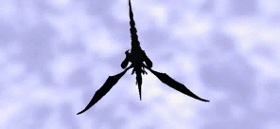
Lagi, in his Type 01 form (seen from underneath), is seen flying off into the distance; the two legs of a rider can be made out. The ending is telling us that Lagi ended the game as the Type 01 dragon, which is the same shape that the dragon takes in Panzer Dragoon in the events that are to follow. In other words, this ending is showing us the future and what is going to happen next. There’s very little reason to interpret this any other way; this more or less confirms (without the presence of an official confirmation that is) that Panzer Dragoon Zwei was always meant to be a prequel.
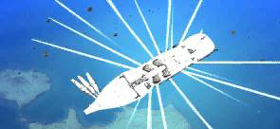
Here we see the ancient skyship that would later be named Shelcoof blowing up by literally bursting open with beams of explosive energy (the ship is seen from above in this shot). After Lagi and Lundi did sufficient damage to the looming ship, it explodes with brilliant rays of blinding white light. If you played the original game or follow the story later (see below), and especially if events were ever unclear to anyone, it’s clarified that the dragon itself is clearly responsible somehow for destroying the ship from the inside out.
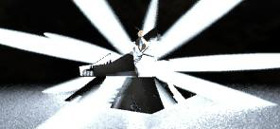
Next we see the Tower present in Panzer Dragoon blowing up in a similar fashion. Images of the ship from Panzer Dragoon Zwei and the Tower here are overlapped for a very brief moment. Thus parallels are drawn between the two in order to convey an unspoken connection. We see these monoliths of unimaginable destruction be brought to an end in the exact same way as if to imply that they are somehow the same.
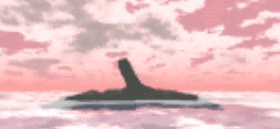
Following the bursting explosions above, viewers peer into the unseen future. Clouds rapidly pass over this leaning Tower as if time is passing quickly. It’s actually blurred at first and comes into focus (which is nicely done, as it literally implies the focus of the next game). The fact that it is seen after the destruction of the ship and the earlier Tower conveys an important relationship: they are all connected somehow and not merely in a literal monolithic sense, although that doesn’t escape us either. It goes beyond the literal into something far deeper and darker. The Tower here becomes known as the Tower of Uru, but at the end of Panzer Dragoon Zwei, it remains a mystery. Team Andromeda planned ahead of time it seems to span the story across several games rather than improvise (i.e. make things up as they went along).
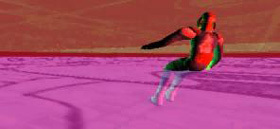
Everything seen thus far is what Lundi is seeing. The dragon who Lundi named Lagi, and later calls the Heresy Dragon, is imparting knowledge to Lundi regarding the Tower network. Lundi and Lagi shared an implicit trust, which culminated in Lagi sharing important information with Lundi – truthful knowledge about the Ancients that even Edge didn’t receive. Lagi’s visions don’t merely transfer data; they blend moving images together meaningfully. The vision here, documented by Lundi’s later journals, is indistinct and disconcerting (in any of the primary endings, Lundi presses both of his hands against the sides of his head as if in pain and as if he cannot process the information that he is receiving). Lundi himself describes this vision as dreamlike and confusing. In this shot, Lundi seems to be floating over a sea of pink colours, which perhaps best illustrates that confusion. The vision takes him from the present to the long forgotten past and all the way back again into the future.
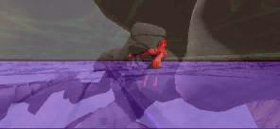
Lundi is then overlapped with the Sky Rider soon after, yet that doesn’t mean they are the same person (even though that’s what it seems to indicate). We are being shown the reins being passed onto another; the next rider. I assume that Lundi’s vision then ends when we see a neon-coloured tunnel.
The summarized events that follow are not necessarily a part of the information Lundi is receiving. These cinematic images could simply be showing players what happens next in the timeline; Panzer Dragoon Zwei was a prequel after all. In the shot below players behold the Sky Rider’s tragic death. His distinctive silky black clothing and bony-white armour match the colours of Azel’s thin suit. If the Sky Rider was indeed a drone, then his whole design would’ve been used as a drone template. Team Andromeda might’ve based Azel on his appearance. I don’t find a drone theory satisfying, because I feel that it would detract a little from the human willingness to die for a noble cause. Where’s the story in a drone fighting to save a race who will not fight to save themselves? I don’t like to think that Lagi left Lundi because he didn’t need the human anymore, then picked up a much more suitable drone, and only chose Kyle as a rider out of necessity. Human beings are not just replacements.
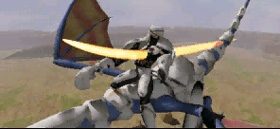
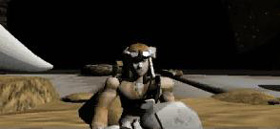
Here, Kyle (Keil Fluge in Japan) picks up the unknown rider’s bulky gun, and bravely continues his mission. The Sky Rider drone couldn’t get the job done but Kyle, a mere human, managed to prevail.
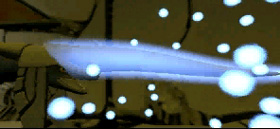
Lagi leaves Kyle and enters the first Tower. The dragon’s horn glows white while pulling in white energy orbs all around it whilst Kyle can only watch helplessly in disbelief. Basically, we witness the first Tower’s destruction again as seen in Panzer Dragoon all over again. In other words, this is yet one more reason to believe that these images are just showing us what happens next.
It’s too unambiguous to really need anyone to spell it out for us; there’s no other way to interpret what we are witnessing before our very eyes. We’re not translating something from nonsense into English here.
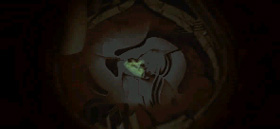
Lastly, the (Type 01) dragon crest found inside Shelcoof is put on display (that is, the ruined Shelcoof in Panzer Dragoon Saga). The blue-white energy patch located on the dragon’s lower neck is depicted in the crest. No doubt the belief that the greenish light is a bad omen stemmed from such a crest.
However, we don’t see the throat of the dragon depicted in the crest glow green until the screen fades to black. Then the patch of green light becomes all we can see. The placement of the green light is the ending’s way of conveying the true meaning of the “ominous light”. The portrayal of the bioluminary oscillator on the engraved dragon’s throat could even be more symbolic than anything else. The dragon crest may merely be an engraving which contains nothing at all. The crest itself proves that there is some truth to the ending cinematic; no one can pretend that Panzer Dragoon Zwei’s true ending never happened or doesn’t exist. Of course, it could always be lying to us. Still, this full motion video sequence is hardly remembered for its crystal clarity.
